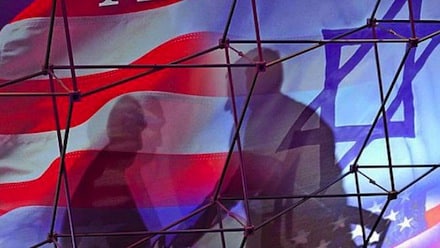
Footnotes in government reports are often the place where disgruntled bureaucrats leave clues. It is where bits of information that lead elsewhere are suggestively placed. Senior officials might not allow potentially controversial information into the body of a report.
In the Senate report on CIA torture there is such a footnote. Early in the report’s more than five hundred pages, footnote 51 concerns the November 26, 2001 Draft of Legal Appendix, Hostile Interrogations: Legal Consideration for CIA Officers.
This draft memorandum, according to the Senate report, “cited the ‘Israeli example’ as a possible basis for arguing that ‘torture was necessary to prevent imminent, significant, physical harm to persons, where there is no other available means to prevent the harm.’”
US law is fairly clear: torture is illegal in all cases. There is no “ticking-time bomb” scenario that allows for the cruel and inhuman treatment of prisoners. If it has no basis in US law, the CIA suggests, then its officers could use Israeli practice as a precedent. The Israeli judiciary has been kinder on torture.
In 2007, the CIA was worried: could they be held accountable for the torture their officers had been conducting at the so-called “black sites”?
Correspondence between the Principal Deputy Attorney General Steven Bradbury (of the US Justice Department) and Acting General Counsel of the CIA, John Rizzo, testifies to that anxiety. Rizzo sought justification in the “Israeli example.”
The US Congress had been discussing the McCain Amendment – to prohibit the “inhumane treatment of prisoners.” Rizzo wrote there was a “striking” similarity between the US discussions and those held in Israel in 1999. Rizzo wrote the Israeli Supreme Court ruled “that several techniques were possibly permissible, but require some form of legislative sanction.” He hoped Congress would provide such sanction. If not, Rizzo invoked the “necessity defense” – imported from Israel – that if it became necessary, it was acceptable to use torture.
Why did the CIA seek justification in the Israeli example? After all, says Laleh Khalili, author of Time in the Shadows, the CIA has its own history of torture. It was used in Latin America to decisive effect and enshrined in the CIA’s 1963 KUBARK Counterintelligence Interrogation manual.
That manual is not for the faint of heart. Its style makes torture appear decidedly banal – “the electric current should be known in advance, so that transformers and other modifying devices will be on hand if needed,” it notes in a section on electric shocks.
Sections of the current Senate report on Torture could very well have been lifted from the 1963 manual: detainees should be imprisoned “in a cell which has no light”; although “an environment still more subject to control, such as water-tank or iron lung, is even more effective.” The more honest justification for CIA torture in the War on Terror should not have been in Israeli practice, but in what historian Greg Grandin calls “empire’s workshop,” Latin America.
Nevertheless, Khalili notes, the CIA likely wanted legitimacy in the courts – Israeli if not American – rather than referring to its history. The Israeli Supreme Court is staffed by people who have had distinguished fellowships from Princeton and Harvard – “and whose supposedly liberal rulings nevertheless leave room for a range of methods of torture.” It seemed an ideal place to seek a precedent.
Fair use excerpt. Read the rest of the article here.

